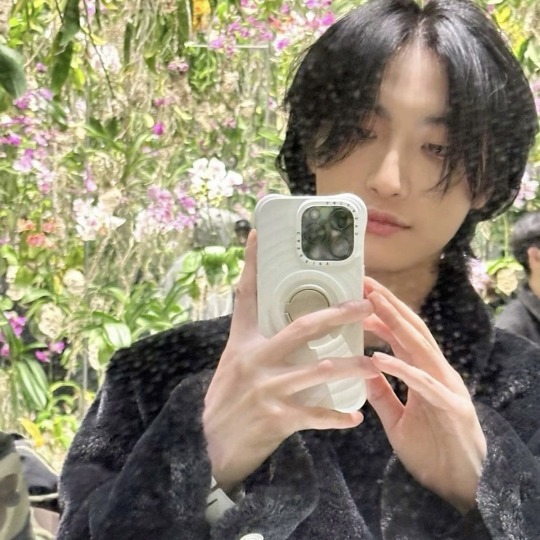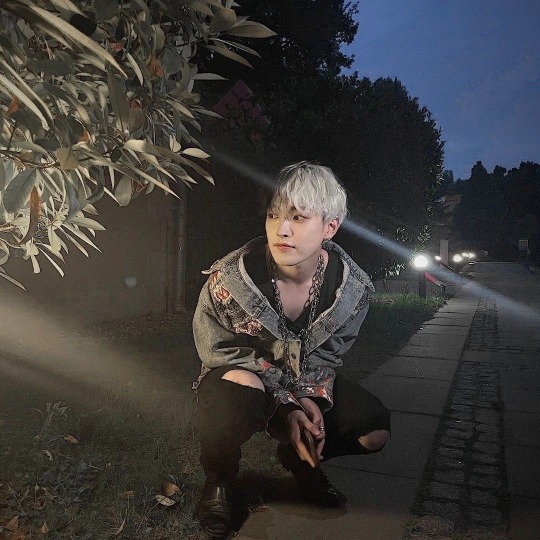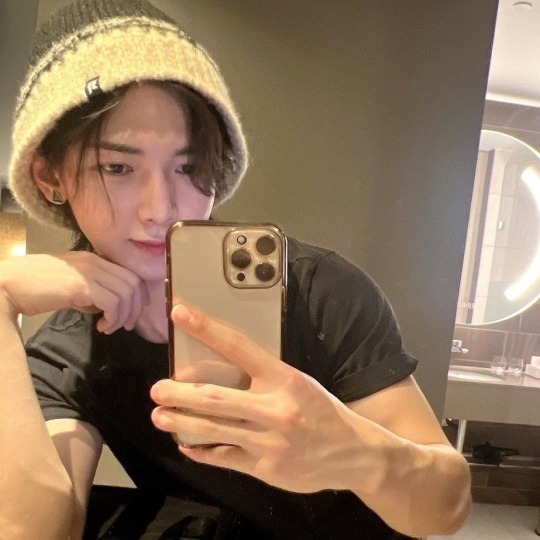#hongju
Explore tagged Tumblr posts
Text
they're so ????? 😹
6 notes
·
View notes
Text
Hygienic and Durable: Applications of Pushbutton Switches in Medical Devices

Introduction
In the medical field, the reliability and hygiene of equipment are crucial. Pushbutton switches, as integral components of medical devices, must meet strict standards in terms of material safety, design precision, and environmental adaptability. This article explores how pushbutton switches with antibacterial properties, waterproof capabilities, and seamless designs cater to the unique requirements of medical equipment, presenting detailed examples and insights into their practical applications.
1. Antibacterial Properties: Enhancing Hygiene in Medical Environments
1.1 Materials with Built-in Antibacterial Properties
Medical devices often operate in environments prone to bacterial contamination, such as hospitals and clinics. Pushbutton switches made from antibacterial materials or with antibacterial coatings can effectively reduce bacterial growth and enhance hygiene.
Case Study: In surgical rooms, pushbutton switches on operating tables are coated with silver-ion antibacterial layers, which inhibit 99.9% of common bacteria, ensuring safe use even under intense usage.
1.2 Compliance with Medical Standards
Antibacterial pushbutton switches must comply with strict industry regulations such as ISO 22196, which specifies the measurement of antibacterial activity on plastics and other non-porous surfaces.
Technical Highlight: A laboratory diagnostic device employs pushbutton switches that not only meet ISO standards but also integrate UV-resistant materials, maintaining antibacterial properties over prolonged exposure to sterilization lights.
2. Waterproof Design: Ensuring Functionality in Challenging Conditions
2.1 IP68 Waterproof Standards
Medical devices are frequently cleaned and sterilized, often involving exposure to liquids or disinfectants. Pushbutton switches with IP68 waterproof ratings are designed to function effectively even when submerged or subjected to high-pressure washing.
Case Study: A portable ultrasound machine features IP68-rated pushbutton switches, allowing the device to be safely cleaned with disinfectant sprays without risking operational failure.
2.2 Seamless Integration with Device Casings
To achieve optimal waterproofing, pushbutton switches are often integrated seamlessly into the device casing, eliminating gaps where liquid or contaminants could penetrate.
Application Scenario: In infusion pumps, the seamless integration of pushbutton switches ensures that no moisture enters the internal circuitry, safeguarding the device's long-term performance.
3. Seamless Design: Supporting Hygienic and Efficient Operations
3.1 Smooth, Gap-Free Surfaces
Pushbutton switches with gap-free designs are easy to clean, reducing the risk of bacterial accumulation. This is particularly important for devices used in sterile environments, such as operating rooms or intensive care units.
Case Study: A hospital’s ventilator incorporates touch-sensitive pushbutton switches with a flat, smooth surface, making them easy to disinfect with a single wipe while maintaining excellent tactile feedback.
3.2 Enhanced Usability for Medical Personnel
Seamless designs also contribute to ease of use, allowing medical personnel to operate devices efficiently, even while wearing gloves.
Application Example: In an emergency defibrillator, pushbutton switches are designed with enhanced tactile feedback, enabling accurate operation during critical situations where precision is essential.
4. High-Precision Feedback: Supporting Advanced Medical Applications
4.1 Precision Control in Surgical Devices
Pushbutton switches used in surgical instruments require highly accurate tactile feedback to ensure precise control. This allows surgeons to perform complex procedures with confidence.
Case Study: A robotic-assisted surgical device features pushbutton switches with micro-mechanical structures, delivering highly accurate feedback to surgeons during delicate operations.
4.2 Reliable Feedback in Monitoring Systems
In patient monitoring devices, pushbutton switches are crucial for activating or adjusting sensitive functions, such as setting alarm thresholds or calibrating sensors.
Application Example: A cardiac monitoring device integrates pushbutton switches with LED indicators, providing both tactile and visual feedback to ensure proper functionality during use.
5. Advanced Technologies in Medical Pushbutton Switches
5.1 Integration with Touch and Voice Interfaces
Modern medical devices increasingly incorporate touch-sensitive and voice-activated systems alongside pushbutton switches, enabling hybrid interaction methods for enhanced convenience.
Future Outlook: Hybrid pushbutton switches in medical devices might combine tactile feedback with touchscreen interfaces, offering intuitive control and improved device functionality.
5.2 Adaptation to Sterilization and Harsh Environments
Pushbutton switches for medical use are being designed with materials and coatings that can withstand repeated sterilization cycles, such as autoclaving or UV disinfection.
Technical Highlight: A dialysis machine's control panel features pushbutton switches with PTFE coatings, resistant to high-temperature sterilization and chemical exposure.
Conclusion
Pushbutton switches are vital components in medical devices, offering robust, hygienic, and reliable operation under stringent conditions. Antibacterial materials, waterproof designs, and seamless integration ensure they meet the high demands of healthcare environments. As medical technology advances, pushbutton switches will continue to evolve, integrating more intelligent features to enhance their functionality and adaptability. By addressing the unique challenges of medical applications, these switches contribute significantly to improving patient care and the efficiency of healthcare operations.
en.dghongju.com
0 notes
Text


You're here for a blind date, aren't you?
Serendipity’s Embrace ─ Episode 1 (우연일까)
#Serendipity’s Embrace#우연일까#우연일까?#chae jonghyeop#chae jong hyeop#채종협#kang huyeong#lee hongju#kim sohyun#김소현#kdrama#kdramaedit#kdramagif#korean drama#nunafilms
101 notes
·
View notes
Text
"Self-conceited thoughts just bring embarrassment!" - Nam HongJu, While you were sleeping 01.
1 note
·
View note
Text
Scarlett smiles as she walks to get the things Hongju had asked for earlier. "I put a cake in there for you as well, as a thank you."

"Scarlett! Yeah, I'm also glad to see you. And thank you! You're a lifesaver" Hongjo said and nodded eagerly at the other. "Alright, I'll be waiting".

9 notes
·
View notes
Text
JUYEON & HER BOYS .ᐟ
SEONGHWA ⚡︎ HWASEONG



juhwa
their relationship is very much built on comfort. over the years, seonghwa has become a safe space for juyeon and that’s specifically based on how he treats her when she’s experiencing an episode. he doesn’t try to force her to talk about what’s wrong or ask her if she’s okay. he just sits with her and lets her exist. sometimes, he’ll talk while juyeon listens and sometimes they’ll just sit in silence. he knows how to navigate her and she appreciates that.
on a more lighthearted note, she stresses him out. anytime something happens that he should be even slightly worried about, he’s looking at juyeon first because nine times out of ten, it’s her doing. juyeon doesn’t listen to hongjoong so when it comes to scolding or trying to calm her down, it’s seonghwa on the job usually bribing her with something so she’ll relax.
HONGJOONG ⚡︎ JOONG



hongju
hongjoong has always had confidence in juyeon. it’s the reason why she’s even in the group. but when she officially joined and began to practice with them, things went slightly south. their different perspectives made them clash a lot. juyeon would call hongjoong too bossy and hongjoong would tell her that her work ethic was poor. this was before anyone really knew about juyeon’s poor mental state so there was a huge lack of understanding between the both of them. it wasn’t completely bad blood but there were a lot of frustrating moments. after talking and learning more about juyeon on a personal level, hongjoong laid off a bit. he took the time to understand her and now their disagreements aren’t as serious as they used to be.
hongjoong is juyeon’s favorite target when it comes to pranks because to her, he has the best reactions. he gets scared shitless and then scolds her like a dad. she thinks it’s hilarious. sometimes, he’ll let her childish energy slide simply just to see her happy.
YUNHO ⚡︎ YUN



yunju
yunho reminds juyeon of her older brother if they had a good relationship. out of all of the members, yunho and juyeon definitely have that brother/sister energy the most. they’ll play fight and play video games together, screaming at each other through voice chat while being in the same house (poor yeosang 😭).
he’s actually very protective of juyeon, despite her being older. he tries to encourage her to take care of herself by engaging with her. if he goes to the gym, he’ll ask if she wants to tag along. if he’s eating something that’s even a little healthy, he’ll give her some with even asking. he’s like her bodyguard in public (even though she swears she doesn’t need one). he insist on making sure she’s okay.
YEOSANG ⚡︎ SANG-AH



jusang
it took a while for juyeon and yeosang to become close. at first, juyeon thought he was kind of boring. he didn’t talk to her much and kept quiet whenever she was around. honestly she thought he didn’t like her. really, yeosang was just intimidated by her. juyeon is loud and boisterous and comes off as rude or aggressive sometimes. she made him nervous in a way that he didn’t want to accidentally set her off. after learning this, she tried to tone it down a bit around yeosang until he was comfortable enough with her.
in a way, juyeon is protective of yeosang. he’s known to be on the quieter side and juyeon takes the initiative to try to get him out of his shell. you know those moments where yeosang’ll want to get someone’s attention but just doesn’t say anything and stands there until someone notices? juyeon’s the one yelling to that person from the across the room. she always makes sure he has an opportunity to speak during interviews and tells him “don’t suffer in silence.” she just might be the leader of the yeosang protection squad.
SAN ⚡︎ SANRIO



jusan
san was someone who caught juyeon off guard when they first met. he was so polite and spoke so formerly, it almost freaked her out. even after she told the members to speak comfortably it took san a bit longer to adjust. she wasn’t used to the kindness san showed her and for a minute, she thought he had ulterior motives. it took a long awaited conversation to clear up any misunderstandings between the two before they became close but they got there.
juyeon considers san one of her biggest supporters, always cheering her on and going with her to solo schedules when he can. many people argue that san brings out the kindness in juyeon. she’s a lot nicer to him and when he’s around. san is known for being very kind and gentleman-like and that definitely rubs off on her. she doesn’t want to do anything that'll seriously hurt him so she stays far away from him when she’s upset. the only thing he isn’t safe from is juyeon stealing his food, because she will take his cake like seonghwa did.
MINGI ⚡︎ MINI



minju
if someone were to ask juyeon who is she closest to in ateez, she would say mingi. to juyeon, mingi is like a giant puppy. she doesn’t like to admit it, but she has a soft spot for him. sometimes she’ll do small gestures for him like buying him snacks or getting him a cup of coffee while she’s at a nearby cafe. she tries to act like it’s nothing whenever he tries to thank her for it. mingi tends to follow juyeon, either hanging out in her room or going with her whenever she has to run errands. he likes being in her presence.
they bond over their similar styles and music taste. they send each other music the other might like and go on shopping trips. they also spend a lot of studio time together and it could either go one of two ways: they make the dumbest, most chaotic song you could think of, or the greatest thing you’ve ever heard.
there’s a mutual understanding for each other when it comes to their mental health struggles. juyeon doesn’t talk about it much but she’ll sit and listen to mingi whenever he needs. in regular conversation, nothing goes without a funny comment or remark from juyeon. but in these situations, she shuts up and listens, allowing he to say whatever is on his mind without any judgement.
WOOYOUNG ⚡︎ YOUNG-AH



wooju ; partners in crime
loud ass mfs, keep these two AWAY from each other. the smallest things will set these two into a fit of laughter for ten minutes which leaves everyone else confused. nobody is safe when these two are together; you get nothing but chaos and bickering. they’re either partners in crime or each other’s worst enemy in games and challenges. juyeon and wooyoung are definitely the type to have random ass conversations in the middle of the night.
“what if fish had legs?”
“are you sure you’re not on drugs?”
JONGHO ⚡︎ JJONGIE



juho ; menace number 1 & menace number 2
juyeon and jongho have a very casual friendship. some would call them strictly coworkers or “not close” but that’s a bit of an exaggeration. they aren’t strictly coworkers but they aren’t super close either. they actually know very little about each other on a personal level. obviously, they know basic facts but in a who knows who better? contest, they’d both lose.
they definitely have chaotic potential though. they’re usually the ones who find funny tiktok videos to recreate or come up with inside jokes. she really treats him like the younger brother she never had. they tease and set each other up for embarrassing moments but it’s all in good fun.
#ㄨ✘✗メ✗•.ᐟ TAKE YOU TO THE BASICS!#fictional idol community#ateez x reader#ateez 9th member#ateez oc#ateez scenarios#fictional idol addition#fictional idol oc#kpop added member#kpop addition#kpop oc#kpop#ateez fic#ateez fanfic#ateez imagines#ateez#wooyoung x reader#hongjoong x reader#mingi x reader#san x reader#seonghwa x reader#yunho x reader#yeosang x reader#jongho x reader
68 notes
·
View notes
Text
kang huyeong according to hongju: he doesnt laugh. he's expressionless and disloyal. he's inhuman. he's like a smart preschooler.
also kang huyeong with hongju:








#cjh is great for this role because he has such a 'wow' smile it really transforms his face#so when he smiles for the first time after beeing 'expressionless' for most of the time it really hits#serendipity's embrace#vinformation
65 notes
·
View notes
Text
bro hongju caught him smiling for maybe two seconds and hooyoung's just like "i cannot be caught LACKING like this" 😭😭😭
42 notes
·
View notes
Text
He laughs, happy that they're finally reunited. "I really did miss you." He allows her to link their arms, ready to show her around. He frowns when she asks for a lick before sighing and handing her the spoon. "Fine, you can have a bite. Just one bite though! Nothing more. Mint chocolate is very important to me." He gasps. "Oh! after the ice cream shop we'll go to the cafe and get Iced Americanos! Have you had one?"

"you should be thankful that i didn't give you the same greeting i did in 1938." with her lace covered finger, she poked his jutted lip with a grin. "so stop worrying your pretty face. we can just make up for lost time now." hongjoo smiled, "i thought you'd never ask." she linked her arm in his. she turned her head toward him at his outright refusal to a mere suggestion. "you can't even spare a bite— no, not even a bite. a lick, for your oldest friend?"

10 notes
·
View notes
Text
LAST CALL: Which profession did Taehyung portray in the 'Protect the BTS village' episode of Run BTS?
2 notes
·
View notes
Text
AAAAAAAAAAAAAAAa Hongju finally said "don't go" to Hooyoung!!!!!!!!!!!!@#$#
7 notes
·
View notes
Text
Compact and Space-Saving Power Socket Design: Empowering Modern Home and Office Environments

As modern life accelerates and technology advances, the demand for power sockets in home and office environments is increasing. However, these spaces often need to maximize available space while maintaining a clean and aesthetically pleasing appearance. Therefore, compact and space-saving power socket design has become a crucial topic. This article will explore how to meet power supply needs while achieving space-saving and aesthetic goals through innovative design.
1. Invisible Power Sockets for Furniture and Office Equipment
In modern home and office environments, aesthetics and functionality need to go hand in hand. Power sockets, as an essential functional component, must not only fulfill their primary role but also integrate seamlessly into the overall design. Invisible power socket design aims to cleverly hide or embed power interfaces into furniture and office equipment, providing a solution that is both aesthetically pleasing and practical.
1.1 Applications of Embedded Power Sockets
Embedded power sockets can be integrated into various pieces of furniture and office equipment, such as desks, cabinets, and kitchen countertops. The main advantages of this design include space-saving, maintaining cleanliness, and ease of access.
Embedded Sockets in Desks: Modern desks often feature embedded power sockets installed under the tabletop or within an opening on the desk surface. This way, cables can be hidden beneath the desk, keeping the surface tidy and visually appealing. Users can access the power socket by simply pushing or pressing it to reveal the power interface.
Embedded Sockets in Kitchen Countertops: In kitchen design, embedded power sockets are also widely used. These sockets can be installed below the countertop and retracted into the countertop when not in use, keeping the surface smooth. When needed, the socket can be activated by pressing a button or pulling a handle to provide a power interface. This design not only enhances aesthetics but also improves space utilization in the kitchen.
Challenges of Embedded Power Sockets: The design of embedded power sockets requires consideration of cable management and ventilation. Excessive cables can lead to clutter, so specialized cable management solutions are needed. Additionally, since power sockets are installed in enclosed spaces, proper ventilation and heat dissipation designs are crucial to prevent overheating and ensure safety.
1.2 Hidden Power Sockets
Hidden power sockets achieve greater concealment and aesthetic effect by hiding sockets within or behind furniture. Hidden designs remain completely out of sight when not in use and can be easily accessed when needed.
Built-in Power Sockets in Furniture: Some furniture items, such as sofas, desks, and nightstands, can incorporate built-in power sockets. These sockets are typically installed on the sides or backs of the furniture, accessible by sliding or opening a cover. This design maintains the furniture’s aesthetics while providing convenient power access.
Wall-Mounted Hidden Sockets: Hidden sockets can also be installed on walls, covered by sliding panels or concealed doors. This design is not only suitable for homes but is also widely used in high-end office spaces and hotel rooms. They often use the same materials and colors as the wall to achieve a hidden effect.
1.3 Smart Invisible Power Sockets
With the advancement of smart home technology, smart invisible power sockets have emerged. These sockets not only remain hidden within furniture but also integrate smart control functions, enabling remote control via mobile apps or voice assistants. Smart invisible sockets offer users a more convenient and efficient way to manage power.
Remote Control: Smart sockets can be controlled remotely through mobile applications, allowing users to easily turn power on or off and even monitor power status from a distance. This is important for home safety and energy savings.
Voice Control: Combined with smart home voice assistants like Amazon Alexa or Google Assistant, users can control power socket switches through voice commands, providing an even more convenient control method.
2. Ultra-Thin Power Sockets for Small Devices
In modern home and office environments, small devices such as laptops, smartphones, and tablets are increasingly common. The demand for power sockets for these devices is driving the design and development of ultra-thin power sockets. Ultra-thin power sockets provide reliable power connections in compact spaces while meeting aesthetic and functional needs.
2.1 Design Considerations for Ultra-Thin Sockets
The design of ultra-thin power sockets must balance functionality, space utilization, and aesthetic requirements. Designers face a series of technical challenges when developing these sockets:
Reducing Socket Thickness: The thickness of ultra-thin sockets should be minimized to fit the limited space on walls, desktops, or other surfaces. The use of miniaturized electronic components and highly integrated circuit designs helps reduce the overall thickness of the socket.
Maintaining Safety: Despite the reduction in thickness, safety cannot be compromised. Ultra-thin sockets must still meet international electrical safety standards, such as overload protection, short-circuit protection, and insulation protection. Using high-temperature resistant and high-insulation materials is key to ensuring safety.
Aesthetic Design: Ultra-thin power sockets often target the high-end market, so their appearance must meet the aesthetic standards of modern home and office environments. Simple, modern designs and high-quality material choices, such as metal panels or tempered glass panels, help enhance the product's premium feel.
2.2 Application Scenarios for Ultra-Thin Sockets
Ultra-thin power sockets offer unique advantages in multiple application scenarios:
Wall Mounting: In home renovations, especially in modern living rooms and bedrooms, ultra-thin wall-mounted power sockets are widely used. They save space and can blend seamlessly with the wall, maintaining the overall visual appeal.
Office Desks and Conference Tables: Ultra-thin power sockets can be used on office desks and conference tables to provide convenient power interfaces without occupying desktop space. These sockets can be installed directly on the surface, accessible by sliding or flipping a cover.
Smart Home Devices: Ultra-thin power sockets can also be used in smart home devices, such as smart lighting and smart curtain control systems. These systems typically require low-power interfaces, which ultra-thin sockets effectively meet.
2.3 Innovative Technologies in Ultra-Thin Sockets
To achieve ultra-thin designs, developers have adopted a range of innovative technologies:
Micro-Miniaturization of Integrated Circuits: By using micro-miniaturized integrated circuit designs, more functions can be implemented within limited space, such as smart control and power protection. This micro-miniaturization technology not only reduces the volume of sockets but also enhances their functionality and reliability.
New Material Applications: Ultra-thin sockets often use high-strength composite materials, such as carbon fiber and nanomaterials, to maintain sufficient strength and durability while reducing thickness. These materials also have better heat dissipation properties, helping to prevent overheating.
Integration of Wireless Charging: Integrating wireless charging capabilities into ultra-thin power sockets is a future trend. This allows users to place devices directly on the socket for wireless charging, eliminating the need for extra chargers and cables.
Conclusion
Compact and space-saving power socket designs offer greater flexibility and aesthetic appeal in modern home and office environments. Whether it's invisible sockets for furniture or ultra-thin sockets for small devices, these designs meet user needs while showcasing the application of innovative technologies. In the future, with further advancements in materials science and smart control technologies, we can expect to see more efficient and aesthetically pleasing power socket designs, providing more convenient power solutions for our living and working environments.
en.dghongju.com
0 notes
Text
What was seen as an outlandish idea two years ago—that frozen Russian assets could be used to pay for war-torn Ukraine’s reconstruction—is edging closer to becoming reality, in what could become a landmark precedent in international law.
Financial institutions in the United States and Europe hold about $300 billion worth of Russian state assets that were frozen at the start of the war and which, if seized, could go a long way toward paying for the damage wrought by the invasion. The World Bank last year estimated the cost of that damage to be over $400 billion, and it has only grown since.
In the early days of the war, U.S. Treasury Secretary Janet Yellen dismissed the idea of seizing Russian assets as not “legally permissible.” But the notion has seen momentum recently, in part due to Russia’s continued assault on Ukraine’s civilian infrastructure and in part due to growing concerns over the near-term future of U.S. and Western aid for Kyiv.
Last week, the U.S. Senate advanced legislation that would authorize the seizure of frozen Russian state funds, following a similar measure earlier in the House of Representatives. The Biden administration has backed the bill after carefully examining the legal ramifications.
Canada already has such a law in the works. The European Union has agreed in principle to the idea of seizing at least the interest earned from frozen Russian assets for Ukraine’s reconstruction. The G-7 will further discuss using Russian money to rebuild Ukraine at a meeting next month. And a gaggle of foreign-policy luminaries made the case for such a move just last week.
“We should be prepared to do some innovative thinking about how we use these resources to help Ukraine,” British Foreign Secretary David Cameron said at the World Economic Forum in Davos, Switzerland, this month.
Such a move would be unprecedented in its scope, and it presents a complex set of legal challenges that critics fear could undermine the principle of state sovereign immunity and even erode confidence in Western financial institutions and currencies.
But the fight over the move from freeze to seize is important not just for the future of Ukraine and the calculus of Russian President Vladimir Putin today. Leading scholars of international law argue that confiscation would set a positive precedent while failing to do so would constrain future efforts. “Whichever decision is made, it will become a defining precedent whenever future aggression is confronted—and a decisive factor in the frequency with which such aggression again threatens civilization,” Harvard University’s Laurence Tribe and colleagues wrote in a seminal paper last fall.
Similar appropriations of state assets have happened before, most notably the United Nations-sanctioned U.S. seizure of billions of dollars of Iraqi funds that were earmarked for reparations for Kuwait in the wake of the 1990 invasion. The United States did something similar, on a much smaller scale, with a portion of frozen Afghan central bank funds after the Taliban took over Kabul in 2021.
But the potential seizure of hundreds of billions of dollars—roughly half the total assets of the Russian Central Bank at the outbreak of war—would be a significant change in how countries respond to aggressor states, with the ability to reshape international law with an eye to future conflicts.
“I don’t see a legal obstacle. There’s clearly a moral imperative. And any economic risk can be mitigated by countries doing this together,” said Harold Hongju Koh, a former State Department legal advisor in the Obama administration and professor at Yale Law School, who is advising Ukraine in its cases before the International Court of Justice at The Hague. “If everyone does it together, it creates a new precedent.
“Every single attack, and every bit of damage, was exacerbated by Putin’s lack of restraint, so you want to create a system where there’s a deterrent—if there’s a future dictator who understands that every such decision adds to the amount of money they’re going to have to pay back, they might decide differently.”
Russian officials are gearing up for a fight in the event the country’s assets are seized, threatening legal action in courts in Europe and the United States. Putin already signed a decree in December seizing the Russian assets of a number of European companies, including those of the Danish beer company Carlsberg and the French yogurt manufacturer Danone. Kremlin spokesperson Dmitry Peskov has warned that Moscow has a list of Western assets, reportedly nearly as large as the frozen Russian funds in the West, that could be seized in retaliation. A spokesperson for the Russian foreign ministry dismissed the potential move as “21st-century piracy” this month.
But even though momentum for asset confiscation is building, it’s not a done deal by any means. The United States holds only a small portion of the frozen Russian assets—with estimates of between $40 billion and $60 billion or so. The vast majority are held in Europe, especially in Belgium’s Euroclear financial clearing house, but the EU and most member states are lukewarm about the idea of moving to outright seizure of Russian funds, fearing retaliation by Moscow. Proponents of the asset seizure agree that the move would be much more effective if done collectively, rather than by one or two countries, both in terms of the dollar amounts involved but also in collectively defending against any potential retaliation.
Debate around the seizure of Russian sovereign assets has mirrored that of many pivotal decisions taken by Ukraine’s Western partners during the course of the war—including decisions to send tanks and offensive weapons to the Ukrainian military. In a pattern that has played out many times before, Washington and London have come around on the question before cajoling an anxious Europe to join forces.
Meanwhile, Ukraine worries about not just the cost of future reconstruction but also the continued flow of Western, especially U.S., financial and military aid due to Republican obstructionism in the U.S. Congress.
“We need to get to the moment where we can reconstruct the country, and unless we have the money to defend ourselves, we might not get to the point where we can reconstruct ourselves,” said Illia Chernohorenko, a former official at the Ukrainian Justice Ministry and former advisor to Ukrainian President Volodymyr Zelensky. His parents were bombed out of their apartment during the first month of the war and have been refugees ever since. Chernohorenko is now getting another doctorate in international law at the University of Oxford, researching issues such as moving from asset freeze to asset seizure.
But before Ukraine can get its hands on that money needed for rebuilding, questions remain about the legality of such a seizure. The United States already has the authority, under the International Emergency Economic Powers Act, to confiscate state funds; the new legislation currently before Congress is just meant to clarify that authority and specifically earmark its use for Ukraine’s reconstruction. Other countries, such as the United Kingdom, would need to pass new legislation to be able to move from freezing assets to seizing them.
One of the main objections to the plan, from both Moscow and some Western legal experts, is that such asset confiscation could violate Russia’s sovereign immunity. Seizing assets of individuals and private companies, such as those on designated sanctions lists, presents few legal issues. But seizing funds belonging to a sovereign state’s central bank could, critics say, run afoul of the idea that states are essentially immune from legal remedies and would itself be a violation of international law.
Proponents dismiss those concerns. For starters, they say, sovereign immunity only applies to states facing judicial action by other nations, not executive or legislative remedies. More to the point, they say, Russia, by its illegal invasion of Ukraine and widespread and well-documented commission of war crimes, has essentially forfeited its right to be treated as a sovereign, the same way sovereign immunity is waived when state corporations engage in business fraud.
“You can’t act like a private murderer and say, ‘I should be defended like a sovereign actor,’” Koh said.
Others have argued that the line, such as it was, was crossed when the funds were frozen at the outset of the war. That’s one reason why many are sanguine about concerns of capital flight away from the Western financial system.
“What are you talking about, ‘the sanctity of sovereign funds’? We’ve crossed that line, let’s not kid ourselves,” said Daniel Fried, a former U.S. ambassador to Poland. “The Chinese saw what we did, the Saudis saw what we did, and they didn’t pull their money out of our banks.”
Another big issue is the so-called doctrine of countermeasures. In theory, a state that suffers a violation of international law—such as an illegal invasion—has the right to redress that wrong, even if that means temporarily violating international law itself. What’s more, if the aggressor state has violated universal norms, such as the U.N. Charter, all states have the right to resort to countermeasures. That’s the basic rationale that proponents point to for the move from collective asset freezes to outright seizures.
The tricky part is that countermeasures are meant to be reversible. If Western countries do move to seize Russian funds and distribute them to Ukraine, the measure would clearly not be reversible. Critics say that’s one reason the move could be counterproductive: With the funds disposed of, Russia would have little incentive to end its war in Ukraine.
But proponents of confiscation dismiss that concern as well, principally by arguing that any such distribution of funds to Ukraine can be seen essentially as a down payment by Russia on the war reparations that it would be legally obliged to pay in any event but likely never will voluntarily. Since the war damage already far exceeds the $300 billion or so in Western hands, giving the money to Ukraine is for all intents and purposes reversible because Russia would have been on the hook for that and more at some time in the future anyway.
There are also practical considerations. The Russian funds are held in many different countries, in many different forms—securities, government bonds, and so on. That could complicate efforts to turn Russia’s frozen riches into usable funds for Ukraine. And unlike in 1991, when the United Nations organized a compensation fund for Kuwait, the Russian veto in the U.N. Security Council means there’s no chance of a similar entity being created this time around.
That means the United States, if it goes ahead, and any other countries that join would have to establish some sort of ad hoc fund to administer monies for Ukraine; for the disbursement of $3.5 billion of Afghan reserves, the United States created a commission in Switzerland. Current legislation under consideration on Capitol Hill—the REPO Act—would, if passed, create a Ukraine Support Fund for reconstruction and humanitarian assistance.
The lingering legal questions, fears over Russian retaliation, and concerns that asset seizure could undermine global confidence in widely used currencies such as the U.S. dollar, British pound, or the euro are just some reasons that Europe is moving more cautiously on this issue. The latest proposal, which could be finalized next month, involves taking only the proceeds of frozen Russian assets—interest accrues to about $3 billion a year—and using that for Ukraine. Proponents of outright confiscation say the EU compromise measure is too small to make a dent in Ukraine’s huge reconstruction bill and also faces the same potential legal challenges as more vigorous actions.
As Russia’s war on Ukraine, the biggest challenge to the international order since World War II, staggers into its third year, it’s becoming clear that Moscow’s actions are reshaping more than frontiers and front lines: They are potentially laying the groundwork for a seismic change in international law. Sovereign impunity, after this, might be a thing of the past.
“They started a war, and they’re going to hide behind law? No, thank you,” Fried said.
8 notes
·
View notes
Text
Kwon Sangpil,
The dedicated meat shop owner, is known for his loyalty, good behavior, and talkative nature. Always taking care of himself, he was best friends with Hooyeong in high school and stepped up to care for Hongju and Hyeji after Hooyeong suddenly left for the US. Sangpil was also the first to discover something happened between Hooyeong and Hongju.

1 note
·
View note
Text
‼️

Honestly I don't get their lovely vibe here coz it doesn't really feel genuine no matter how they acted up like they were having fun together; truth is they just can't. Coz nothing has been really fixed between them. They're still the same enemies who just used to be close friends a very long time ago but now Yeon has the blood of Moo Young's brother on his hands and he even admits he doesn't regret it and also suspects Moo Young to be the masked man he wants to get his revenge on and truth is that the Moo Young is really the masked man who's trapped Yeon in the past and almost killed Rang, Shinju and even Yeon himself. And Hongju? She's that obsessed bitter lover who's been rejected multiple times but still hasn't let go. Who also knows about the true identity of the masked man and his hatred towards Yeon and she also is aware that Yeon too is after the masked man and now she's found out that one of the reasons for all of this is the murder of Moo Young's brother by Yeon and while knowing all of this, with so much hatred and blood between them how could they possibly have real fun? When they're being suspicious and vengeful with each other? More like acting up to it coz otherwise how could it be even possible? That's why I couldn't enjoy their scenes coz it wasn't /couldn't he real!

And now moo young's character has me confused. Like he has his reasons to hate on Yeon and want to make him hurt but.. why go after Rang who's already been dead for three years? Like you see Yeon happily living with Jia, the one he wants and loves the most, and you think how about I go after Yeon's deceased little brother????? Lol and then adding Shinju to the list too? Like bro Shinju was around in 2023 too. Just saying. Any reason you waited this long -and only after time traveling to 1938- to kill some of Yeon's loved ones-and not even his most beloved- just to make him suffer? Then again moo young was really about to kill the blind Yeon but now he's like I need him alive and heals him just like that? btw... now that he's saved Yeon's life, shouldn't Yeon be bound to him by the fox debt contract??🤔
7 notes
·
View notes
Text
@coreofgold
Jae Yoo had gotten a lot more outgoing since being in DC. They had learned to adapt to being in DC without Hongju or anyone else they knew. But they had recently met Lu Ten, and had decided to take a chance and ask him to accompany them to the ball. The night was going well so far. They'd been walking around the exhibits for a while when they turned to him. "Lu Ten, would you possibly want to dance with me?"

17 notes
·
View notes